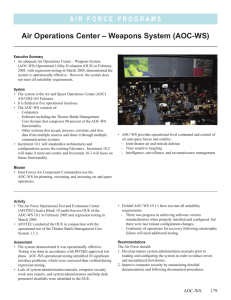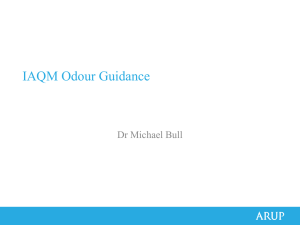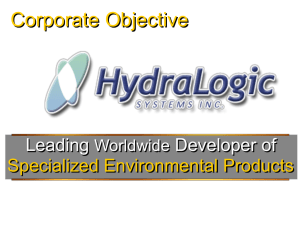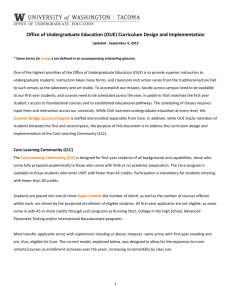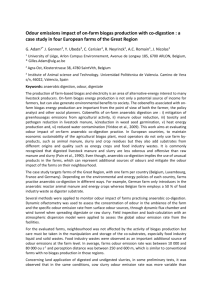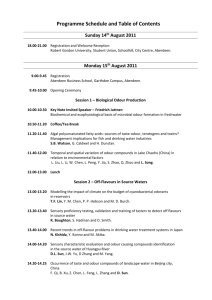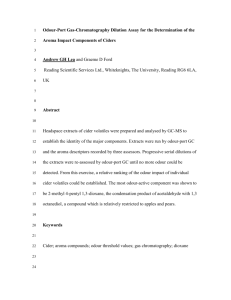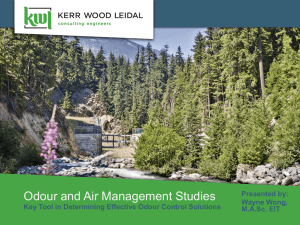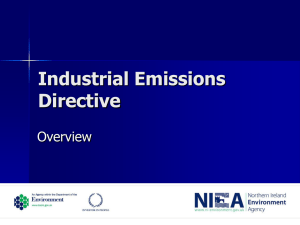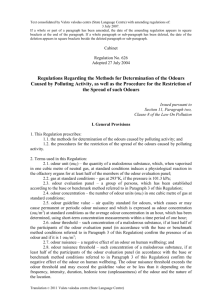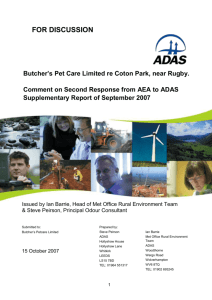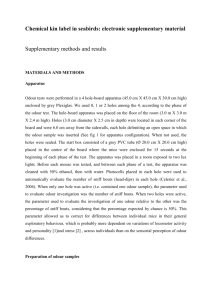odour_assessment_am
advertisement
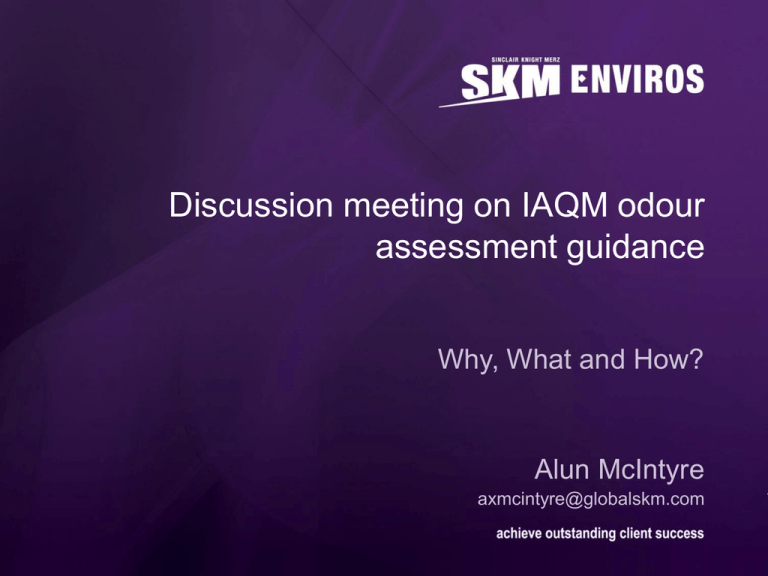
Discussion meeting on IAQM odour assessment guidance Why, What and How? Alun McIntyre axmcintyre@globalskm.com What are we trying to achieve (1)? • Current Guidance: – – – – EIA, EA EP guidance H1 AQMAU modelling guidance (RMS & ADMLC) Construction dust assessment TG(09), EPUK guidance, DMRB (MEA) • Odour – BS EN 13725, H4 What are we trying to achieve (2)? • Establish an agreed framework methodology • Improve quality and consistency • Improve Regulator confidence • Improve transparency • Confirm subject as headline technique • Acknowledge importance in legal cases Areas for Attention • Odour Emission Sampling • Odour Annoyance/Nuisance Thresholds & Criteria • Odour Dispersion Modelling • Futures Odour Emission Sampling • • • • Point Sources Area Sources Unusual Sources? Number of replicates Point Sources Area Sources Sewage Treatment Works •Hood •Micro-meteorological method •Odour potential method •Diurnal variations? •Seasonal variations? Surface sampling Area Sources Landfill Sites •Hood •Micro-meteorological •How reliable is it? •Black art? Summary • Point sources – manageable • Area sources: – Small – hood sampling – Large – Combination of hood & micro-met? – Unusual – Use initiative; don’t stifle creativity Odour annoyance criteria Newbiggin •5 ou/m3 •Ξ 2.5 ouE/m3 •1.5 - 3 - 6 ? Current State of Play • Most practitioners happy with 3 – 5 ouE/m3 as a C98 • 1.5 ouE/m3 for obnoxious odours (rendering) • Case Law: – Mogden Judgement “I would be reluctant to find nuisance if the odour concentration was only 1.5 ouE per m3 but as the odour concentration rises to 5 ouE per m3 I consider that this is the area where nuisance from Mogden STW would start and that by the time that 5 ouE per m3 or above is reached nuisance will certainly be established.” Current State of Play • Several Public Inquiry Decisions: – – – – Anglian Water Cockermouth Coldharbour Lane Landfill ScotWater Decision (5) • All rejected 1.5 ouE/m3 and settled for 3 – 5 ouE/m3 C98 • Experience strongly indicates that 3 ouE/m3 for non-obnxious odours is appropriate Modelling • Dispersion Models? – ISC, R91, Ausplume – AERMOD, ADMS, CALPUFF • • • • • Important to get best answer Input data most critical (emissions, met data) Model set-up also critical Handling of low wind speeds and calms? Area source characteristics Summary • Guidance will help • Level of coverage and detail? – – – – Prescribed methodology Minimum standards Framework approach Water Company example • Fundamental Questions Questions • Do we agree that guidance would be helpful? • What should its form and content be? • Who are the important stakeholders? • What are the next steps? Competing Methods? Not Creating this! Janet & John go Odour Sampling
